Parker Schlueter is a junior Mechanical Engineering major at the University of St. Thomas with an interest in architecture. Parker was awarded a Department of Art History Travel Grant to research architecture in New York City.
Everyone always says that visiting New York City at least once in your life is a must. Recently, I had the wonderful opportunity to visit the city through a grant I received from the Department of Art History at St. Thomas. As one of the most influential cities in the world in the realms of culture, business, and media, New York has almost an endless number of different things to experience. Although I only had two days, my mom and I left no time wasted in our efforts to take in as much of New York as we could – we logged 17 miles of walking!
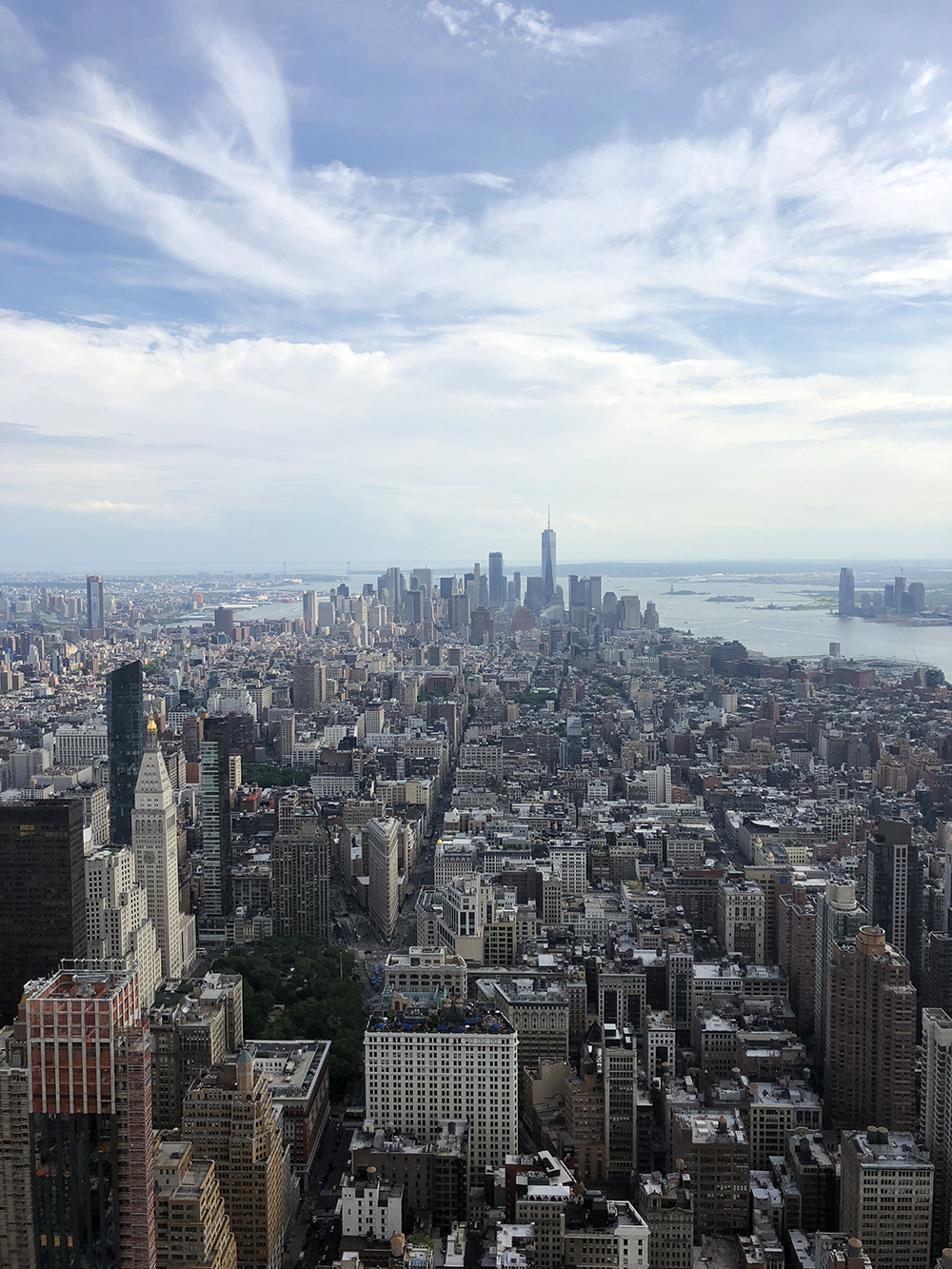
A picturesque view of Manhattan captured on my visit to the Empire State Building
In the fall of 2017, I took a course titled the History of American Architecture, taught by Dr. Victoria Young. Through a strong friendship between Dr. Young and successful American architect Bartholomew Voorsanger, I was able to listen to Mr. Voorsanger talk to our class during a question and answer session. With my current pursuit of an Engineering degree, I found Mr. Voorsanger’s explanations and descriptions of his projects and design processes very interesting. One of our assignments in this class was to write a book review on the biography of Mr. Voorsanger, UNFOLDED: How Architecture Saved my Life, and after receiving very kind feedback from Dr. Young on my review, she asked me if she could share it with Bart. I gladly said yes, and within a couple of days I received a message from Mr. Voorsanger saying that he too had enjoyed my book review, and felt that I had a bright future ahead of me. From this, I knew that I wanted to learn more about his profession, and with the help of Dr. Young I was able to set up a trip to New York to meet with Mr. Voorsanger and learn more about not only his architecture, but the architecture of the city as well.

Myself (left), Mr. Voorsanger (middle), and Mr. Dobday (right) conversing at lunch at the Garden Court Café in the Asia Society
To begin my New York adventure, flying into LaGuardia Airport was a great first experience. With this being the first time I had ever been to New York, seeing the sheer size of the metropolitan area from the airplane was breathtaking; it was nothing like I had ever seen before! Immediately following our landing, I went to the Asia Society in Midtown Manhattan for lunch with Mr. Voorsanger, Dr. Young, and a couple of Bart’s associates: Martin Stigsgaard and Louis Dobday. It was fun listening to how all of them got into architecture growing up and also which particular aspects of their profession they are most passionate about. We then got to talk about how the construction of the Bollinger Canopy of Peace at the National WWII Museum is coming along, and what the inspirations were for the design. I especially enjoyed this conversation, for it connected the fields of architecture and engineering together. After lunch was finished, Bart took us on a tour of the Asia Society building, for he was the architect of the complete redesign and renovation that took place from 1997 to 2001. Initially, I thought it would be him explaining large-scale design factors, such as “why these stairs curve like this” or “how I chose to arrange the walls in the museum.” These were topics that he covered, but I was surprised by how much more he could explain within his design of the building; the one that took me by awe was why he had chosen a deep blue glass for the material of the main stairway. He explained how the blue color was supposed to reflect the same color found in the museums most prized piece, a 15th-century porcelain flask from the Ming Period with a blue dragon painted across the main body.

The main stairway found within the Asia Society building
The rest of the evening on my first day in New York was spent with my mom walking about the city. We got to see some of the city’s most iconic places, such as Central Park, Times Square, St. Patrick’s Cathedral, and Rockefeller Center. The built landscape varies in so many ways in New York, which can easily be seen through the places I have just listed: Central Park really takes you out of the feeling of a big city with its serene nature and greenery, whereas Times Square does just the opposite with all of the tall buildings, bright lights, and thousands of people. You can also be brought back in time by walking into St. Patrick’s Cathedral, for its gothic styling is absolutely stunning on the inside with its high vaulted ceilings and artisanal glasswork.

The North Pool of the 9/11 Memorial
On day two of my visit, my mom and I started the day by going to the 9/11 Memorial and Museum. Although this was not part of the trip spent with Mr. Voorsanger and learning about the architecture of the city, I can say with certainty that it was my favorite part of New York. The 9/11 museum was the most powerful and awestriking exhibit I have ever been in. For someone who isn’t old enough to clearly remember the events that took place on that day, this museum still induced many emotions within me. After viewing this, going back outside to the two pools of where the towers used to stand was very moving. Following this, I linked back up with Dr. Young, and we met Martin, Bart, and Masayuki Sono (another one of Mr. Voorsanger’s associates) at the Rammellzee Exhibition at the Red Bull arts gallery, designed by Martin Stigsgaard. Rammellzee was a popular street artist within New York in the late 20th century, and had very eccentric and colorful art which were influenced by his original graffiti works. The most interesting of all of his works were the “Garbage Gods” – these were massive costumes that he constructed out of various items he found in the streets of New York, which he then performed his music in. Martin gave us a full walkthrough of the exhibit, and explained completely his design process of every aspect of the space, which was a great learning experience.
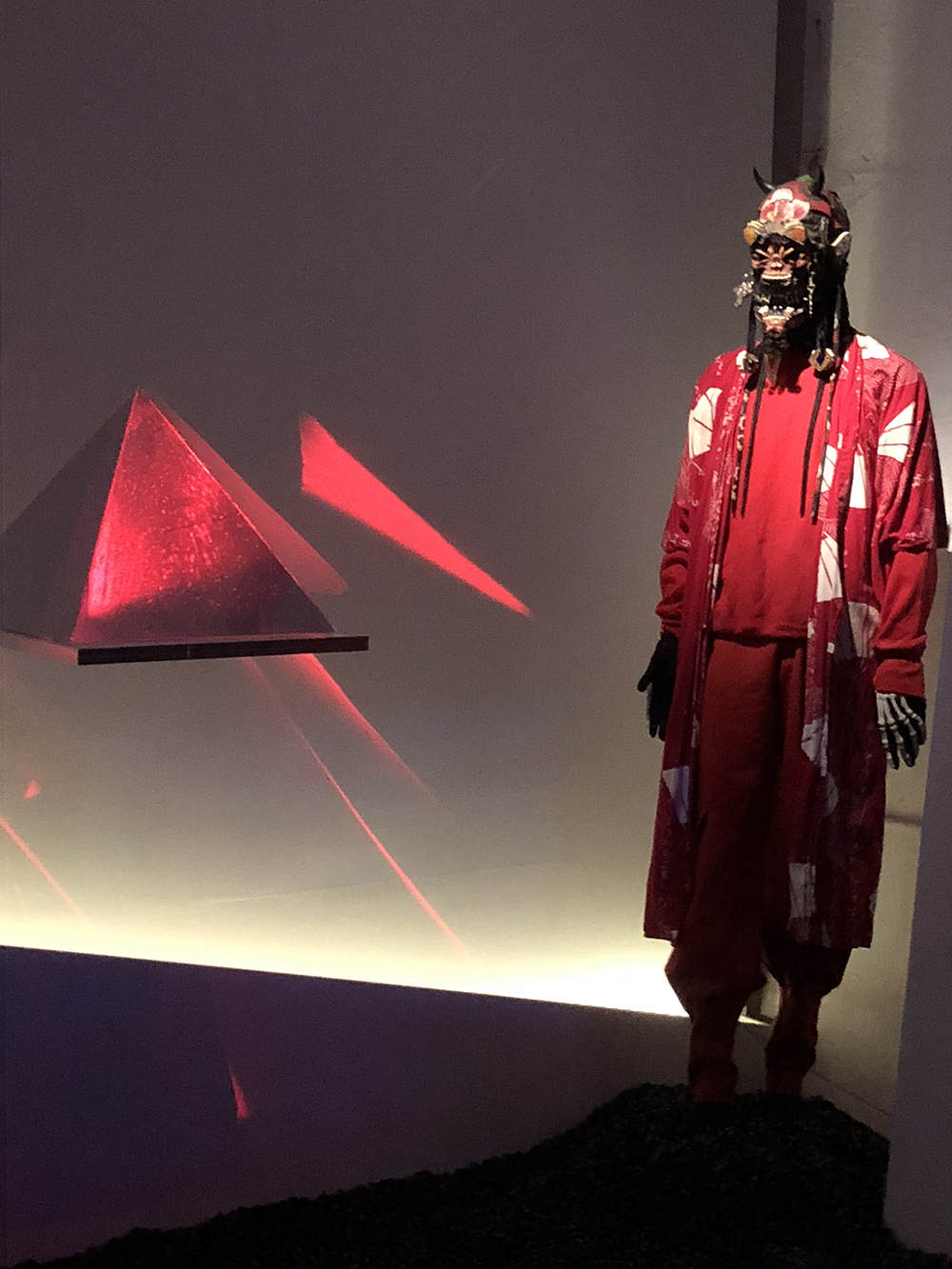
One of Rammellzee’s Garbage Gods, next to the pyramidal urn that contains Rammelzee’s ashes – one of Rammelzee’s own pieces of art
To end our final day, my mom and I checked some more items off of our list of places to visit in New York. We walked the entirety of the High Line, visited the Empire State Building, and walked to look at Grand Central Station and the Chrysler Building. All of these were fantastic experiences, and cool to view in a new-born architectural understanding. Altogether, this trip not only opened my eyes to one of the greatest cities in the world, but it also heightened my interest for architecture. I am excited to see where my future leads me!

Pictured from left to right: Mr. Sono and his wife, Mr. Stigsgaard, myself, Dr. Young, and Mr. Voorsanger outside of the Rammelzee Red Bull Arts Exhibit
 Michael Rainville, Jr. is currently in his second year of the M.A. Art History/Museum Studies Certificate program.
Michael Rainville, Jr. is currently in his second year of the M.A. Art History/Museum Studies Certificate program.
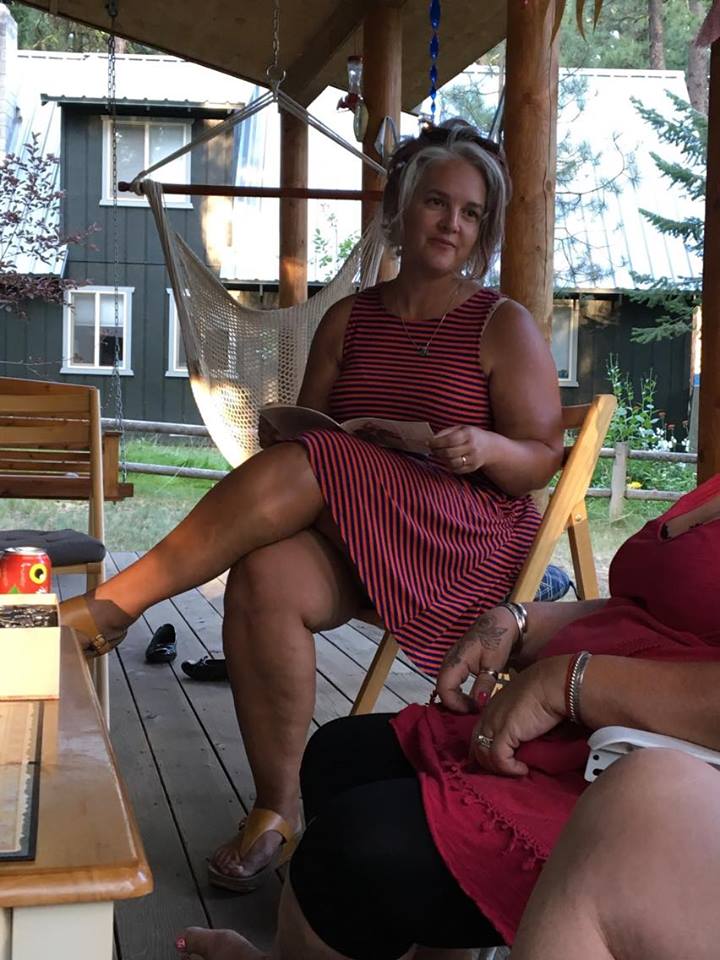








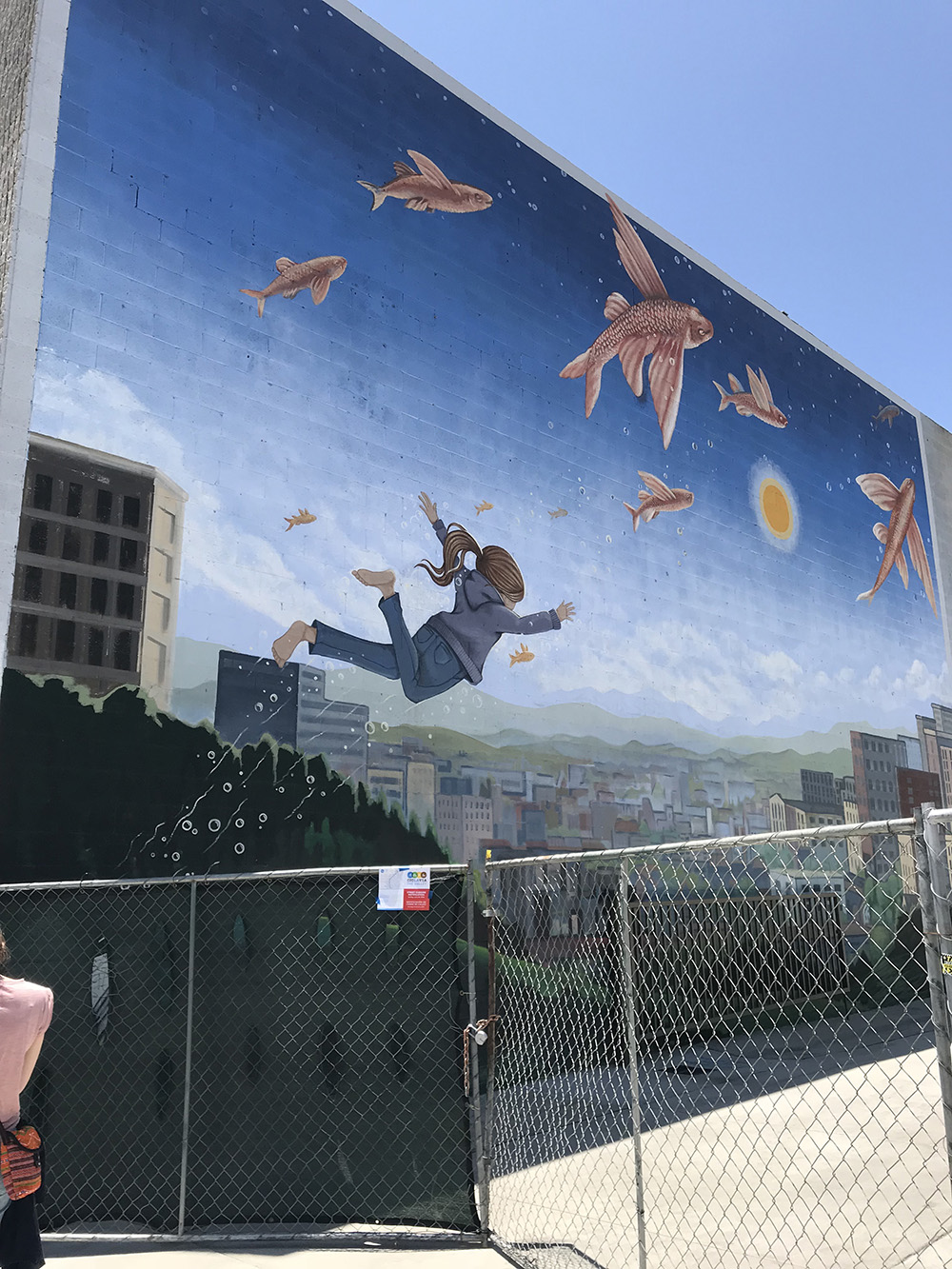


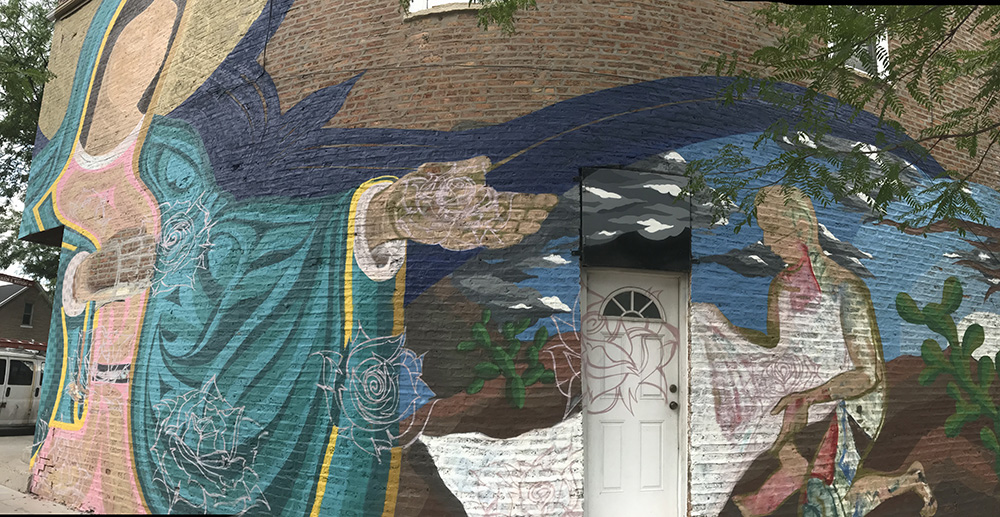
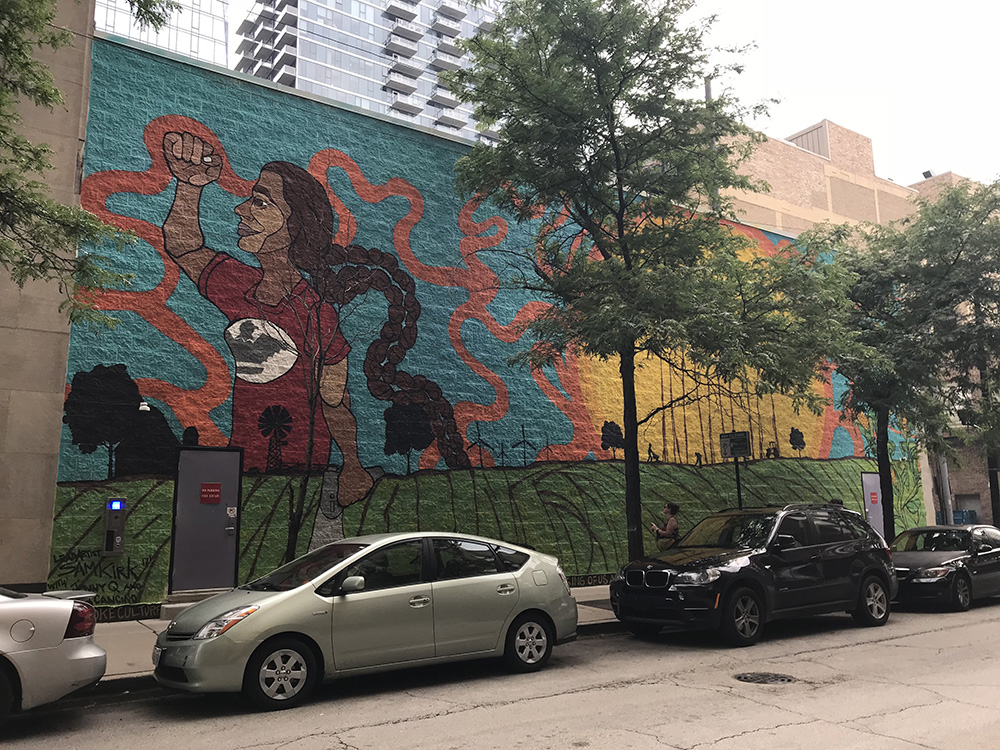
 Jason Burnett is currently in his second year in the M.A. Art History program. This fall, he is enrolled in Museum Studies: Collections, Curation, and Controversy.
Jason Burnett is currently in his second year in the M.A. Art History program. This fall, he is enrolled in Museum Studies: Collections, Curation, and Controversy. Get to know Master’s Program alumni in our series Life After Graduate School. In this month’s feature, meet Rachel Houck (MA, 2017), Executive Director at the Excelsior-Lake Minnetonka Historical Society.
Get to know Master’s Program alumni in our series Life After Graduate School. In this month’s feature, meet Rachel Houck (MA, 2017), Executive Director at the Excelsior-Lake Minnetonka Historical Society.











 Get to know Master’s Program alumni in our new series Life After Graduate School. In this week’s feature, meet Rita Walaszek, a Master’s program alumna currently working in the museum collections of the Minnesota Historical Society.
Get to know Master’s Program alumni in our new series Life After Graduate School. In this week’s feature, meet Rita Walaszek, a Master’s program alumna currently working in the museum collections of the Minnesota Historical Society. Get to know Master’s Program alumni in our new series Life After Graduate School. In this week’s feature, meet Hayley Stoen, Master’s program alumna and the mind behind
Get to know Master’s Program alumni in our new series Life After Graduate School. In this week’s feature, meet Hayley Stoen, Master’s program alumna and the mind behind